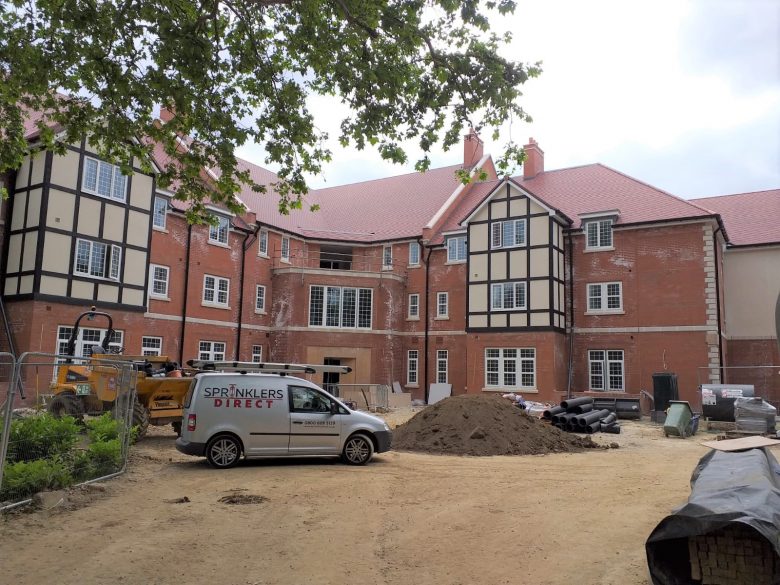Fire Sprinklers in Care Homes to Become Mandatory
Sprinklers to Become Mandatory in All New Care Homes in England
The Government has announced that sprinklers will be a requirement in all new care homes, as part of an update to Approved Document B, which offers guidance on Building Regulations related to fire safety in England. The announcement was made by Rushanara Ali, Parliamentary Under Secretary of State for Building Safety, on 2 September.
The Government’s statement highlighted the importance of sprinklers in enhancing fire protection, particularly for residents who rely on assistance, especially during evacuations. While many care home providers already incorporate sprinklers in new builds, the new regulation provides certainty for those that have not yet adopted the measure. To allow for this transition, care home owners and developers will have a six-month period before the guidance takes effect, with an additional six months to accommodate projects already underway or about to begin.
The National Fire Chiefs Council (NFCC) has long advocated for stronger sprinkler requirements in care homes, as emphasised in their recent Automatic Water Suppression Systems (AWSS) policy statement from May (see statement here). This document notes that sprinkler installations can significantly reduce the risk of fires spreading beyond their point of origin, allowing more time for evacuations and firefighting, and helping to protect vulnerable residents.
Jonathan Dyson, the NFCC’s lead on sprinklers and AWSS, responded positively to the Government’s decision, stating: “The NFCC welcomes the announcement that sprinklers will be mandatory in all new care homes in England. Over the past decade, several devastating fires have occurred in care homes without sprinkler systems, resulting in lives lost, serious injuries, and significant property damage. This new requirement addresses our longstanding concerns about fire safety in care homes, helping to protect vulnerable residents and staff alike.”
Improved Fire Safety and Evacuation for Vulnerable Residents
In addition to the new sprinkler regulations, the Home Office is set to introduce measures aimed at improving fire safety and evacuation procedures for disabled and vulnerable residents in high-rise and higher-risk residential buildings. These proposals, called ‘Residential Personal Emergency Evacuation Plans (PEEPs)’, follow the recommendations from Phase 1 of the Grenfell Tower Inquiry.
Under these plans, residents with disabilities or impairments will receive a tailored risk assessment to determine the appropriate equipment and adjustments needed to ensure their fire safety and evacuation. A ‘Residential PEEP statement’ will also be created, outlining the specific actions vulnerable residents should take in the event of a fire.
The Government has committed to funding this initiative, with support for social housing providers to deliver Residential PEEPs starting next year. Future funding will be addressed in the upcoming Spending Review.
Progress has also been made on implementing recommendation 33.22[d] of the Grenfell Tower Inquiry’s Phase 1 report, which pertains to the installation of evacuation alert systems (‘sounders’) in new high-rise residential buildings over 18 metres tall. Further consideration will be given to the second part of this recommendation, relating to existing buildings, once additional evidence or recommendations are provided in the Phase 2 report.
Rushanara Ali stated: “We are committed to further improving fire safety nationally, and these measures are a vital step in reducing the likelihood and impact of future fires.”
As experts in the design and installation of fire sprinkler systems Sprinklers Directs welcome these changes.







